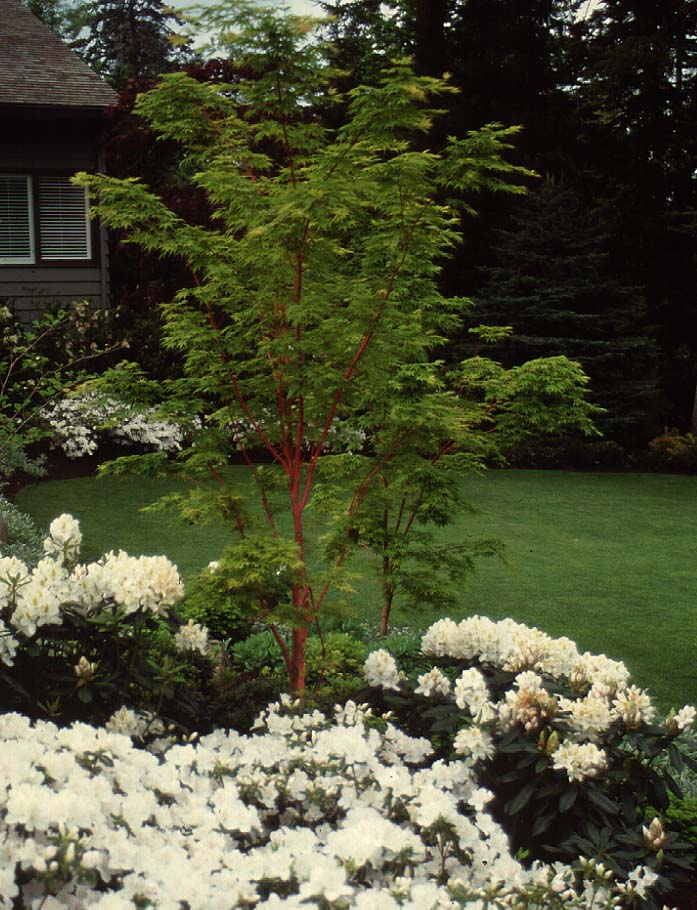| Botanical Name: Acer palmatum 'Sango-kaku' | |
| Common Name: Coral Bark Maple |

-
Anatomy
-
Culture
-
Design
Plant Type
Tree
Height Range
12-25'
Flower Color
n/a
Flower Season
n/a
Leaf Color
Green, Red, Variegated
Bark Color
Red
Fruit Color
n/a
Fruit Season
n/a
Sun
Half, Shade
Water
High, Extra in Summer
Growth Rate
Slow
Soil Type
Clay, Loam
Soil Condition
Average, Rich, Well-drained
Soil pH
Neutral
Adverse Factors
n/a
Design Styles
Formal, Japanese, Tropical, Water Garden, Woodland
Accenting Features
Silhouette, Specimen
Seasonal Interest
Winter, Spring, Summer, Fall
Location Uses
Entry, Shrub Border, Foundation, Patio, Raised Planter
Special Uses
Small Spaces
Attracts Wildlife
n/a
Information by: Stephanie Duer
Photographer: Don Syrek/Engstrom
Photographer: Don Syrek/Engstrom
-
Description
-
Notes
This Japanese maple is known more for its brilliantly colored bark than its foliage. The bark on new wood is bright coral red, aging to a lovely reddish-brown color. foliage emergesbright green with red margins; fall color is golden yellow. Upright and open habit; growns to about 15 to 20 feet tall and nearly as wide, though it will do so very slowly.
As will all Japanese Maples, provide deep, rich, well composted soil. If you are amending the soil, it is best to dig in compost to the plant's eventual width, so as to provide adequate conditions for the entire, eventual root profile. Amending just the hole that the tree is planted in is akin to planting the tree in a slightly bigger pot. Plant in filtered light to full shade, avoiding any mid-day sun or reflective sun. East or north exposures are best unless thre is a very good canopy and no reflective heat. Water weekly. Do not shear.